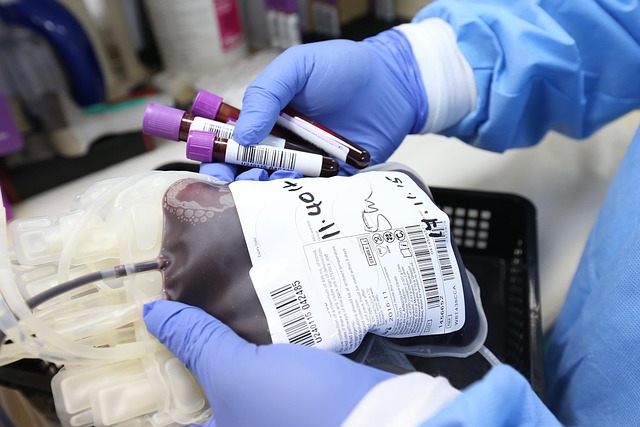Hemoglobinuria: Unexpected Signals You Must Not Ignore
Hemoglobinuria is a rare but serious condition that may silently signal underlying health issues. While often unnoticed in early stages, certain unexpected symptoms could point to a more significant problem. Understanding these signs is essential for timely diagnosis and treatment. This article uncovers the key warning signals of hemoglobinuria and what they could mean for your health.

What Are Early Signs of Hemoglobinuria You Might Overlook?
Hemoglobinuria can present subtle signals that are easily dismissed or attributed to other causes. The most obvious sign is discolored urine, ranging from light pink to dark brown or even cola-colored. However, this symptom might be intermittent or occur only at certain times, such as in the morning (hence the term “nocturnal” in PNH). Other early indicators that people frequently overlook include unexplained fatigue, shortness of breath during normal activities, and pale skin.
Some patients experience mild abdominal discomfort, particularly around the upper abdomen where the spleen is located. Headaches and difficulty concentrating may also occur due to anemia resulting from hemolysis—the destruction of red blood cells that releases hemoglobin into the bloodstream and eventually into the urine. Many patients dismiss these symptoms as stress or overexertion, potentially delaying crucial diagnosis and treatment.
How Hemoglobinuria Could Indicate a Deeper Health Issue
Hemoglobinuria is not a disease but a symptom that signals underlying pathology. In many cases, it points to hemolytic conditions where red blood cells break down prematurely. Paroxysmal nocturnal hemoglobinuria (PNH) represents one of the most serious conditions associated with hemoglobinuria. This rare acquired disorder results from a genetic mutation in hematopoietic stem cells, causing red blood cells to become sensitive to destruction by the body’s complement system.
Beyond PNH, hemoglobinuria may indicate other serious conditions, including autoimmune hemolytic anemia, certain infections, transfusion reactions, or severe burns. It can also signal complications from medications, exposure to certain toxins, or strenuous physical exercise (particularly in runners). The presence of hemoglobinuria alongside other symptoms like jaundice, easy bruising, or recurring blood clots may indicate systemic disorders requiring comprehensive medical evaluation.
Important Diagnostic Steps for Detecting Hemoglobinuria Early
Early and accurate diagnosis of hemoglobinuria involves several critical steps. The diagnostic journey typically begins with urinalysis to confirm the presence of hemoglobin in urine. However, this test cannot distinguish between hemoglobinuria (free hemoglobin) and hematuria (intact red blood cells in urine), necessitating additional testing.
Blood tests prove essential in the diagnostic process, including complete blood count (CBC) to assess red blood cell levels, reticulocyte count to evaluate bone marrow response, and haptoglobin levels—a protein that binds to free hemoglobin. Significantly decreased haptoglobin indicates intravascular hemolysis. For suspected PNH, flow cytometry has become the gold standard diagnostic tool, detecting the absence of specific proteins (CD55 and CD59) on red blood cells.
Additional diagnostic procedures may include:
-
Coombs test to detect antibodies attached to red blood cells
-
Bone marrow examination to evaluate cell production
-
Genetic testing to identify mutations associated with PNH
-
Imaging studies to assess organ involvement, particularly the kidneys and spleen
Myths About Hemoglobin in Urine and How to Approach Them
Several misconceptions about hemoglobinuria can lead to delayed treatment. One common myth suggests that red or brown urine always indicates urinary tract infection. While infections can cause blood in urine, hemoglobinuria specifically involves free hemoglobin rather than intact red blood cells and often has different causes.
Another persistent myth is that hemoglobinuria will resolve on its own without medical intervention. While some cases of exercise-induced hemoglobinuria may indeed be transient, persistent or recurrent episodes require medical evaluation. Some patients believe that drinking more water will “flush out” the problem, but this approach may mask important symptoms without addressing underlying conditions.
Many people incorrectly assume that hemoglobinuria is always painful. In reality, PNH and other hemolytic conditions may cause painless hemoglobinuria, with discomfort arising from complications rather than the hemolysis itself. The absence of pain does not indicate a less serious condition.
Treatment Options for Nocturnal Hemoglobinuria
Treatment for paroxysmal nocturnal hemoglobinuria has evolved significantly in recent years, offering improved outcomes for patients with this rare disorder. The approach depends on disease severity, specific complications, and individual patient factors.
Complement inhibitors represent the most transformative treatment advancement for PNH. These medications work by blocking the complement system—the part of the immune system responsible for red blood cell destruction in PNH. Eculizumab (Soliris) was the first FDA-approved complement inhibitor for PNH in 2007, dramatically improving survival rates. Ravulizumab (Ultomiris), approved in 2018, offers similar efficacy with less frequent dosing, requiring infusions every eight weeks compared to eculizumab’s biweekly schedule.
For patients with significant anemia, supportive measures include:
-
Red blood cell transfusions to manage severe anemia
-
Iron and folate supplementation to support red blood cell production
-
Anticoagulants to prevent thrombotic complications
In select cases, especially for younger patients with severe disease, allogeneic hematopoietic stem cell transplantation (HSCT) offers the only potential cure. However, this procedure carries significant risks and is generally reserved for those with severe aplastic anemia, progressive disease despite complement inhibitor therapy, or recurrent life-threatening blood clots.
Prices, rates, or cost estimates mentioned in this article are based on the latest available information but may change over time. Independent research is advised before making financial decisions.
| Treatment Option | Estimated Cost Range (USD) | Administration | Frequency |
|---|---|---|---|
| Eculizumab (Soliris) | $500,000-$700,000/year | IV infusion | Every 2 weeks |
| Ravulizumab (Ultomiris) | $458,000-$650,000/year | IV infusion | Every 8 weeks |
| HSCT | $350,000-$800,000 | Hospitalization | One-time procedure |
| Supportive Care | $5,000-$50,000/year | Varies | As needed |
Prices, rates, or cost estimates mentioned in this article are based on the latest available information but may change over time. Independent research is advised before making financial decisions.
The management of hemoglobinuria, particularly when related to PNH, requires ongoing monitoring and often lifelong therapy. Early recognition of symptoms, prompt diagnosis, and appropriate treatment can significantly improve quality of life and long-term outcomes. If you notice persistent or recurrent dark urine, especially accompanied by fatigue, shortness of breath, or unexplained pain, consult a healthcare provider promptly. While hemoglobinuria treatments can be costly, various patient assistance programs exist to help offset expenses and improve access to these life-saving therapies.
This article is for informational purposes only and should not be considered medical advice. Please consult a qualified healthcare professional for personalized guidance and treatment.




